Scaling up a business is a challenging yet rewarding endeavor, and implementing the Rockefeller Habits has proven to be an effective strategy for many CEOs, business owners, and entrepreneurs.
However, even with this powerful framework, mistakes can still be made during execution, potentially hindering growth and success.
In this blog post, we will explore the most common Scaling Up® execution mistakes made when implementing the Rockefeller Habits, and provide actionable advice on how to overcome these challenges to propel your business forward on a successful growth trajectory.
So, let’s dive into these pitfalls and learn how to avoid them for a smoother scaling up experience.
Understanding the Rockefeller Habits
The Rockefeller Habits are a set of growth-oriented practices that were introduced by business magnate John D. Rockefeller and later popularized by Verne Harnish, founder of the Entrepreneurs’ Organization and author of the book “Scaling Up.”
These habits focus on three key areas: setting priorities, collecting data, and establishing effective rhythms. The purpose of implementing the Rockefeller Habits is to provide a structured framework for businesses to scale up efficiently and sustainably while maintaining a strong company culture and clear communication channels.
The importance of implementing these habits for scaling up a business cannot be overstated.
By adopting the Rockefeller Habits, CEOs and business owners can better align their strategic goals, monitor progress, and foster a growth-oriented environment that enables their organizations to thrive.
But even those who are motivated to take action have slip ups and aren’t quite sure how to move their ideas into the execution phase.
Here are 6 common mistake CEO’s make when trying to execute their Scaling Up practices:
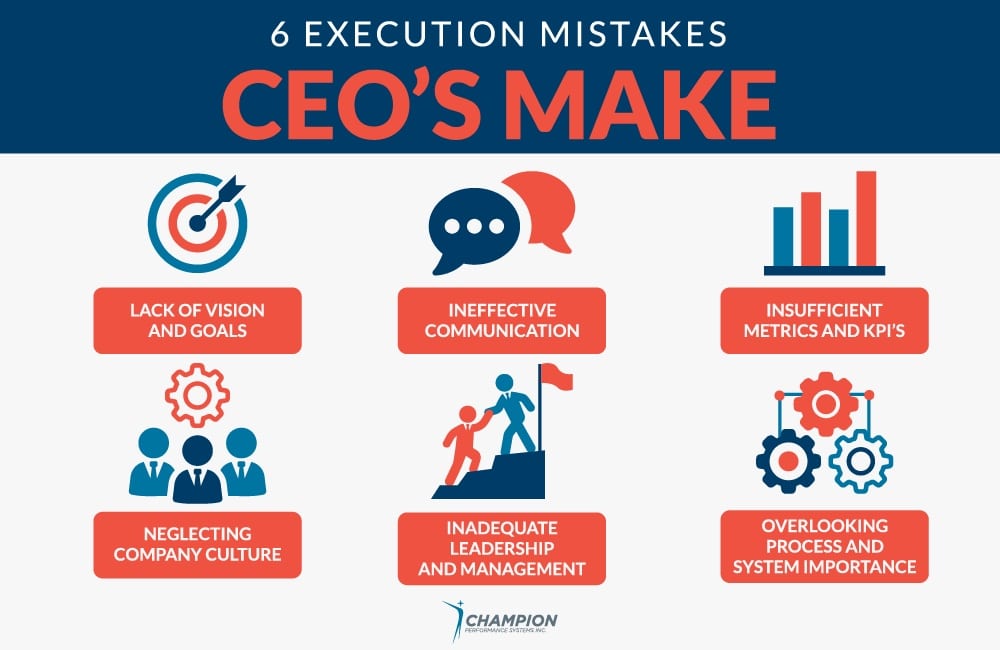
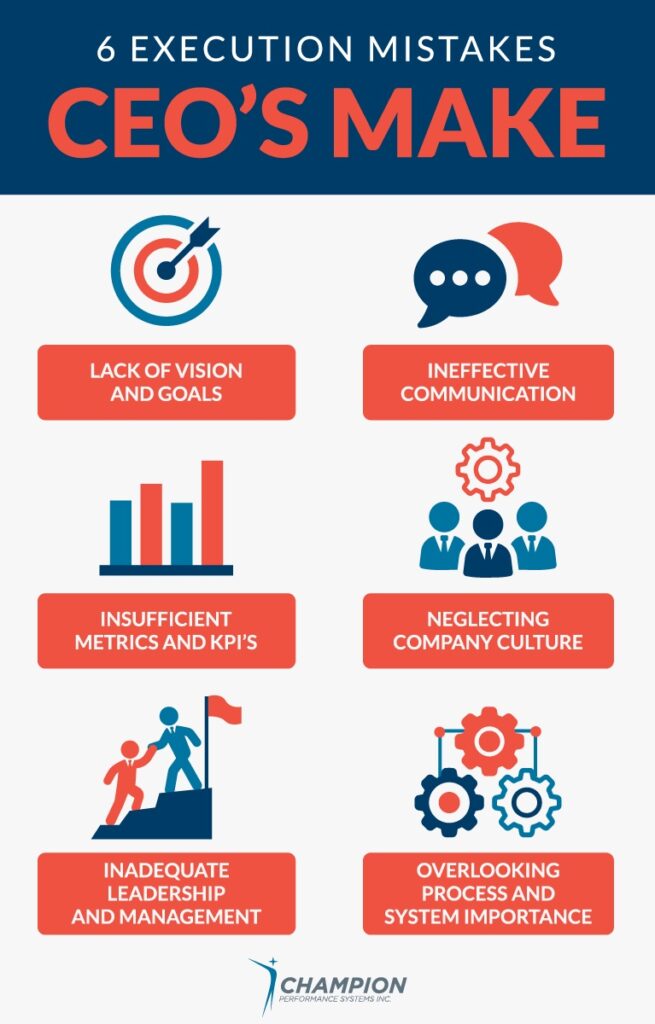
Mistake #1: Lack of Clear Vision and Goals
A common mistake CEOs make when implementing the Rockefeller Habits is not having a clear vision and well-defined goals for their company.
This lack of clarity can lead to confusion among team members and hinder the organization’s ability to scale up effectively.
Having a well-defined purpose and clear vision for the company fosters motivation, organizational alignment, and commitment among team members. Without these in place, it can be difficult to maintain direction or gain any real traction.
When setting goals, it is essential to create SMART (Specific, Measurable, Achievable, Relevant, Time-bound) objectives that can be easily tracked and evaluated.
This ensures that your team stays focused on the most critical tasks necessary for growth.
Additionally, involving team members in the goal-setting process can help increase their commitment to the company’s vision and encourage a sense of ownership in the scaling-up process.
Regularly reviewing and adjusting these goals can also keep them relevant as the company evolves over time.

Mistake #2: Ineffective Communication
Effective communication is a crucial component of successful business scaling. However, many CEOs underestimate the importance of transparent communication.
As a company grows, communication gaps can form within the organization, leading to misunderstandings, inefficiencies, and missed opportunities. To avoid these issues, CEOs must prioritize open dialogue and information sharing among team members.
One way to address communication gaps is by conducting regular assessments of the organization’s communication channels and practices. This can help identify any obstacles that may be hindering the flow of information.
CEOs should also consider implementing communication strategies, such as daily huddles, weekly meetings, and clear reporting structures, to ensure that everyone is kept informed and on the same page.
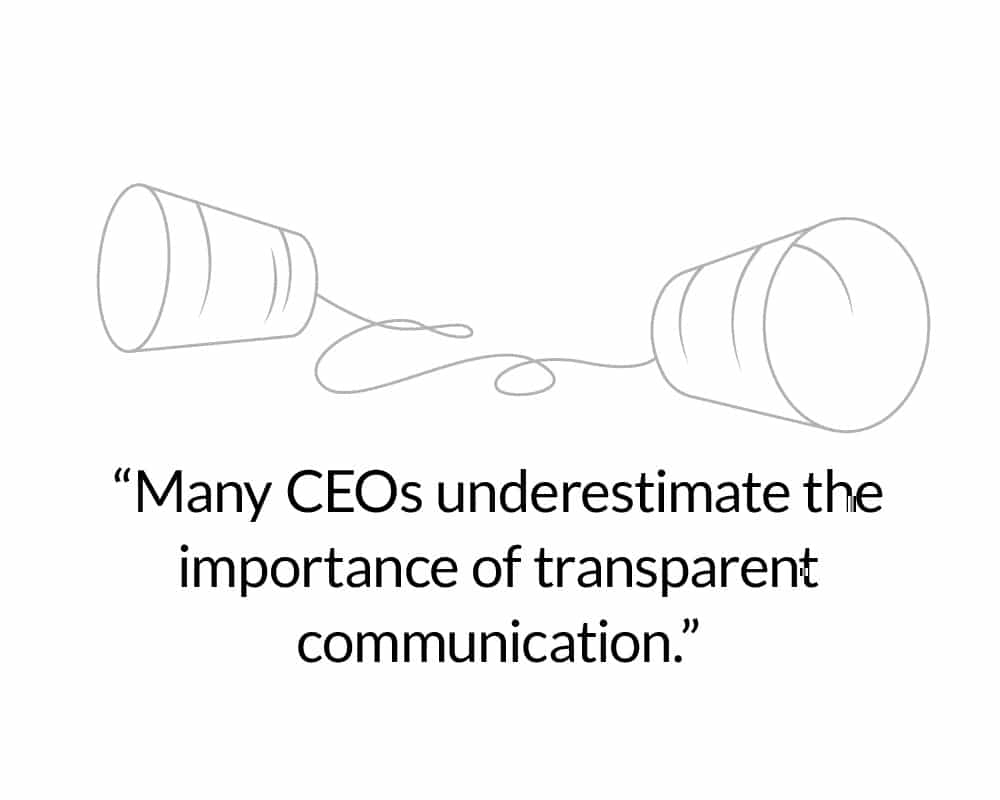
Mistake #3: Insufficient Metrics and KPIs

In order to track progress and determine the effectiveness of scaling up strategies, businesses must establish measurable performance metrics and key performance indicators (KPIs).
Unfortunately, many CEOs fail to identify and implement the right metrics and KPIs for their organization. This can lead to an inability to track progress accurately, resulting in wasted time, resources, and potential setbacks in scaling up execution.
To avoid this mistake, it is essential to determine the most relevant metrics and KPIs for your business, which should align with your overall vision and goals.
Start by identifying the critical aspects of your business that directly contribute to growth, such as customer acquisition, revenue, and employee productivity. Then, establish measurable indicators that will help you track your progress in these areas.
Make sure to set realistic targets for your KPIs and adjust them as needed to reflect changes in the business environment or your scaling up strategy.
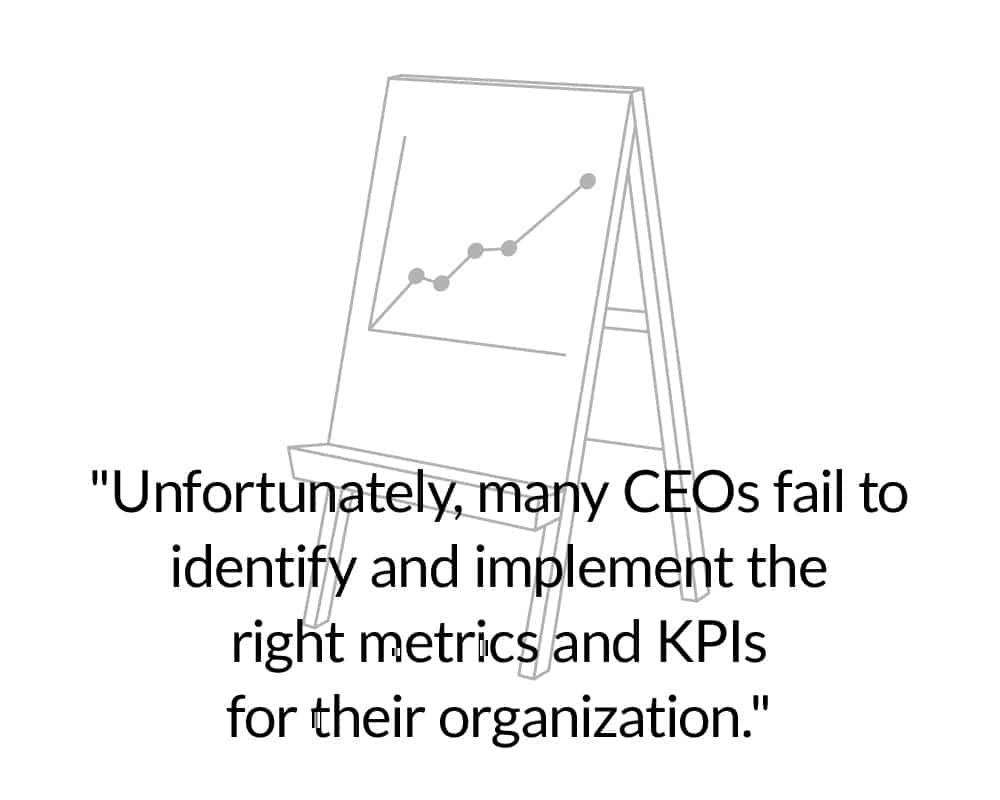
Mistake #4: Neglecting Company Culture
One of the most overlooked aspects when scaling up is enforcing a healthy and inspiring company culture.
While many CEOs only focus on practical matters like goals, metrics, and processes during this stage of growth, it’s essential to remember that people are at the core of any organization. A strong and positive culture fosters innovation, productivity, and loyalty, which are essential for business growth.
Conversely, neglecting company culture can lead to disengagement, high employee turnover, and hindered progress.
To avoid this common mistake, prioritize fostering a growth-oriented culture that aligns with your company’s vision and values. Encourage open dialogue, recognize and reward achievements, and provide opportunities for both personal and professional development.
By investing in your employees and creating an environment where they feel valued and supported, you’ll build a strong foundation for successful scaling up execution.
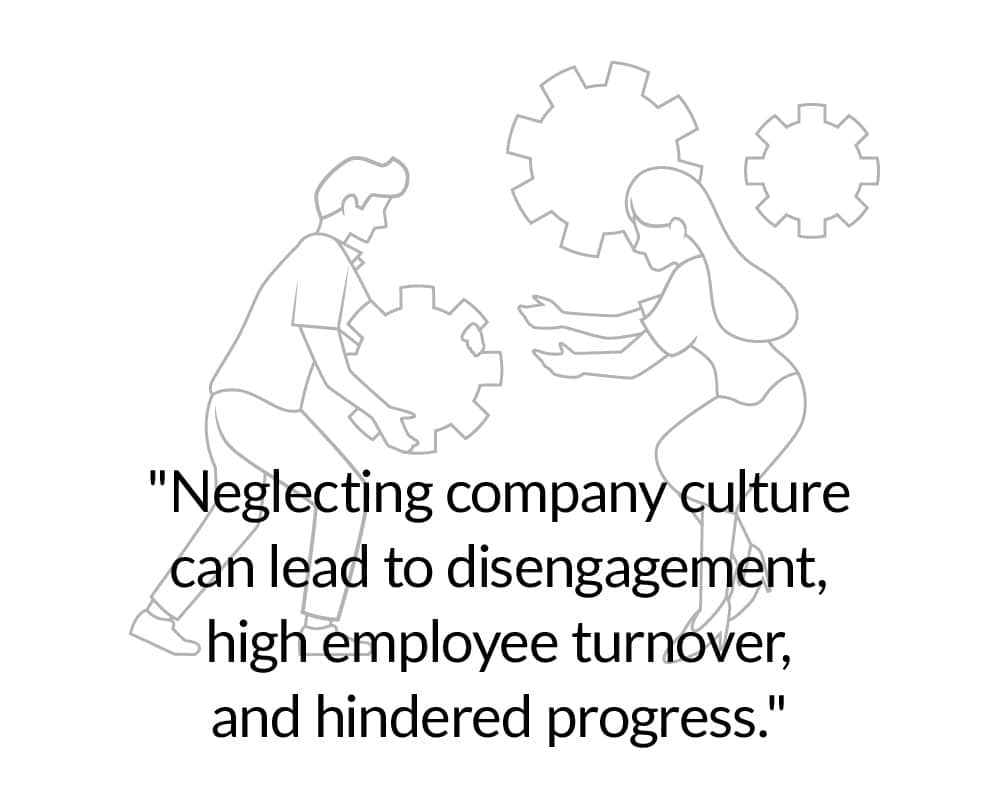
Mistake #5: Inadequate Leadership and Management
Leadership and management are key drivers of scaling up success.
CEOs often make the mistake of not investing enough time and resources in developing their leadership skills and those of their management team. This can result in misalignment with the company’s vision, poor decision-making, and decreased employee engagement.
To address this issue, it’s essential to identify any leadership gaps within the organization and take steps to fill them. This may involve hiring new talent, promoting from within, or providing additional training and development opportunities for existing leaders.
CEOs should also engage in ongoing self-improvement and seek feedback from their team to ensure they are effectively leading the company toward its growth objectives.
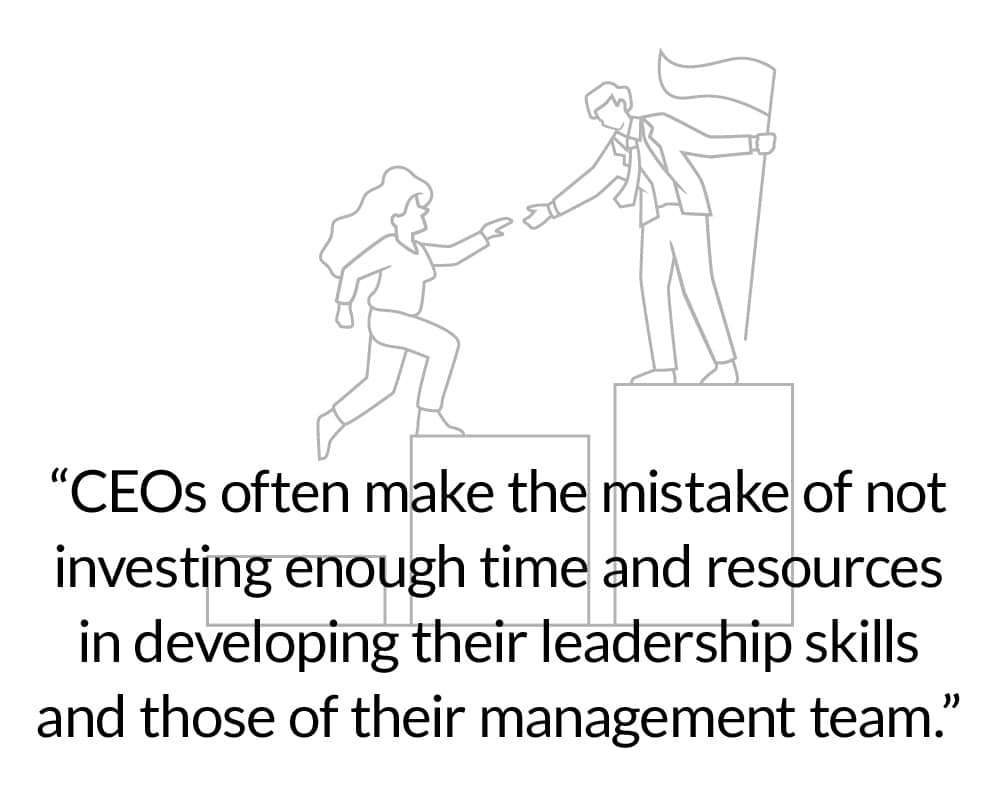
Mistake #6: Overlooking the Importance of Processes and Systems
Processes and systems play a crucial role in the efficient scaling up of a business. They provide structure, consistency, and predictability, which are essential for managing growth and maintaining quality standards.
Overlooking their importance can lead to disorganization, wasted resources, and ultimately hinder the successful implementation of the Rockefeller Habits.
To avoid this mistake, it’s vital to identify areas within your organization where streamlined processes and systems are needed.
Examine your current operations to find bottlenecks, inefficiencies, or areas prone to errors, and develop strategies to improve these aspects.
Additionally, consider implementing appropriate technologies and tools that can support your growth efforts. This may include project management software, customer relationship management (CRM) systems, or automation tools, among others.

Addressing Execution Mistakes in the Rockefeller Habits Implementation
Recognizing and admitting to execution mistakes is a crucial first step in addressing challenges when implementing the Rockefeller Habits.
CEOs and business owners must acknowledge that mistakes have been made and take responsibility for rectifying them.
This approach fosters a culture of continuous improvement and encourages team members to learn from setbacks.
Leveraging resources, such as consultants and peer networks, can provide invaluable support and guidance when addressing challenges in scaling up.
By seeking external advice and expertise, business leaders can gain fresh insights and perspectives on overcoming execution mistakes.
Additionally, engaging with peers who have successfully implemented the Rockefeller Habits can offer practical advice and real-world examples of overcoming similar challenges.
Get A Free Scaling Up Assessment!

Implementing the Rockefeller Habits for scaling up your business can be a powerful strategy for growth, but it is not without its challenges.
Being aware of common execution mistakes and proactively addressing them is essential for success.
By fostering the tips provided, you’ll be well on your way to unlocking your business’s full potential.
At Champion PSI, we understand the importance of a strong online presence and lead generation in scaling up your business.
That’s why we developed a Scaling Up Business Training program to help you take your business to new heights using the Rockefeller Habits. Together, we’ll overcome the challenges of scaling up and pave the way for sustainable, long-term success.
Get A FREE Scaling Up assessment today to see how compatible you are with the program. What are you waiting for?





